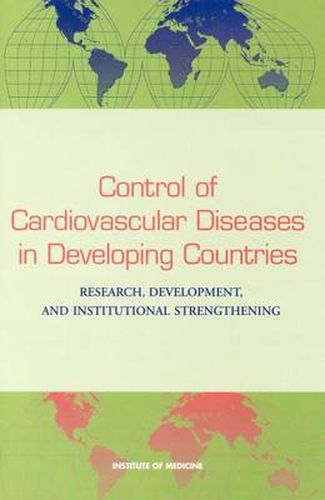Readings Newsletter
Become a Readings Member to make your shopping experience even easier.
Sign in or sign up for free!
You’re not far away from qualifying for FREE standard shipping within Australia
You’ve qualified for FREE standard shipping within Australia
The cart is loading…






Cardiovascular diseases (CVD) are increasing in epidemic proportions in developing countries. CVD already accounts for almost 10 per cent of the developing world’s burden of disease and is likely to become the developing world’s leading cause of death. There is reason for hope, however, given that huge potential exists for applying R&D to control this emerging epidemic - both in creating powerful new interventions such as vaccines and dietary supplements and in guiding behavior. In addition, a considerable body of evidence suggests that current risk-factor prevention programs and low-cost case management of CVD offer feasible, cost-effective ways to reduce CVD mortality and disability in developing country populations.Large-scale CVD control efforts are lacking, however, and thus governments and individuals are left to make choices about health and health care services without the benefit of appropriate knowledge. This report was designed to promote a policy dialogue on CVD based on informed knowledge of R&D opportunities that offer effective, affordable, and widely applicable responses in developing countries. The report examines: the emerging burden of CVD in developing countries; the future worldwide burden of CVD; current prevention and treatment of CVD in developing countries; R&D to support CVD control; and, opportunities and priorities for R&D, and the need for institutional arrangements for collaboration in facing the epidemic.
$9.00 standard shipping within Australia
FREE standard shipping within Australia for orders over $100.00
Express & International shipping calculated at checkout
Cardiovascular diseases (CVD) are increasing in epidemic proportions in developing countries. CVD already accounts for almost 10 per cent of the developing world’s burden of disease and is likely to become the developing world’s leading cause of death. There is reason for hope, however, given that huge potential exists for applying R&D to control this emerging epidemic - both in creating powerful new interventions such as vaccines and dietary supplements and in guiding behavior. In addition, a considerable body of evidence suggests that current risk-factor prevention programs and low-cost case management of CVD offer feasible, cost-effective ways to reduce CVD mortality and disability in developing country populations.Large-scale CVD control efforts are lacking, however, and thus governments and individuals are left to make choices about health and health care services without the benefit of appropriate knowledge. This report was designed to promote a policy dialogue on CVD based on informed knowledge of R&D opportunities that offer effective, affordable, and widely applicable responses in developing countries. The report examines: the emerging burden of CVD in developing countries; the future worldwide burden of CVD; current prevention and treatment of CVD in developing countries; R&D to support CVD control; and, opportunities and priorities for R&D, and the need for institutional arrangements for collaboration in facing the epidemic.